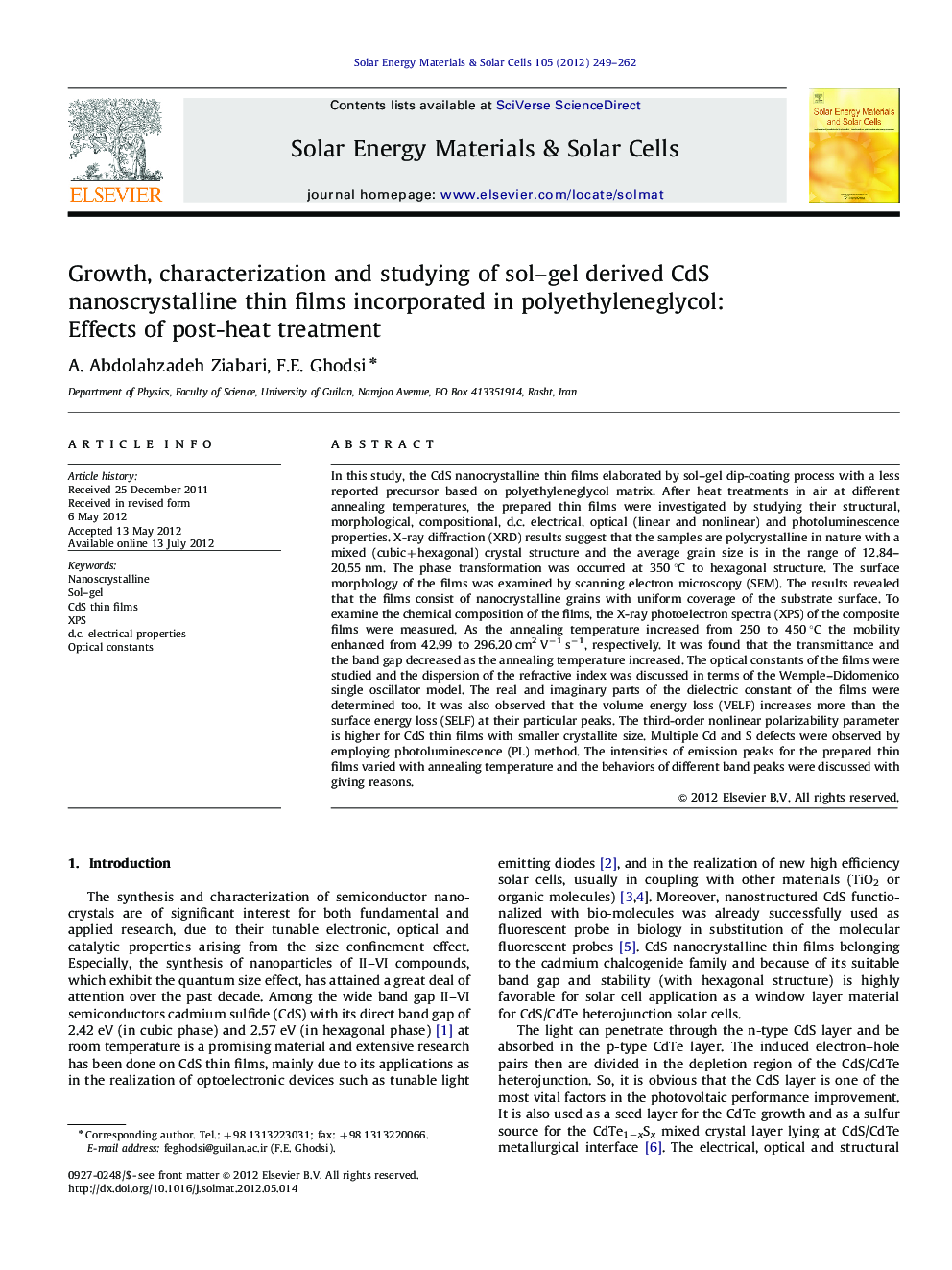| Article ID | Journal | Published Year | Pages | File Type |
|---|---|---|---|---|
| 78977 | Solar Energy Materials and Solar Cells | 2012 | 14 Pages |
In this study, the CdS nanocrystalline thin films elaborated by sol–gel dip-coating process with a less reported precursor based on polyethyleneglycol matrix. After heat treatments in air at different annealing temperatures, the prepared thin films were investigated by studying their structural, morphological, compositional, d.c. electrical, optical (linear and nonlinear) and photoluminescence properties. X-ray diffraction (XRD) results suggest that the samples are polycrystalline in nature with a mixed (cubic+hexagonal) crystal structure and the average grain size is in the range of 12.84–20.55 nm. The phase transformation was occurred at 350 °C to hexagonal structure. The surface morphology of the films was examined by scanning electron microscopy (SEM). The results revealed that the films consist of nanocrystalline grains with uniform coverage of the substrate surface. To examine the chemical composition of the films, the X-ray photoelectron spectra (XPS) of the composite films were measured. As the annealing temperature increased from 250 to 450 °C the mobility enhanced from 42.99 to 296.20 cm2 V−1 s−1, respectively. It was found that the transmittance and the band gap decreased as the annealing temperature increased. The optical constants of the films were studied and the dispersion of the refractive index was discussed in terms of the Wemple–Didomenico single oscillator model. The real and imaginary parts of the dielectric constant of the films were determined too. It was also observed that the volume energy loss (VELF) increases more than the surface energy loss (SELF) at their particular peaks. The third-order nonlinear polarizability parameter is higher for CdS thin films with smaller crystallite size. Multiple Cd and S defects were observed by employing photoluminescence (PL) method. The intensities of emission peaks for the prepared thin films varied with annealing temperature and the behaviors of different band peaks were discussed with giving reasons.
Graphical abstractFigure optionsDownload full-size imageDownload as PowerPoint slideHighlights► Sol–gel derived CdS nanostructured thin films were prepared based on polyethyleneglycol matrix. ► Physical properties of the samples were investigated as a function of annealing temperature. ► The phase transformation was occurred at 350 °C from cubic to hexagonal structure. ► The quantum confinement effects on blue shift of optical band gap were discussed. ► The volume and surface energy loss function were changed with annealing temperature. ► Particle size strongly depend on annealing temperature.
